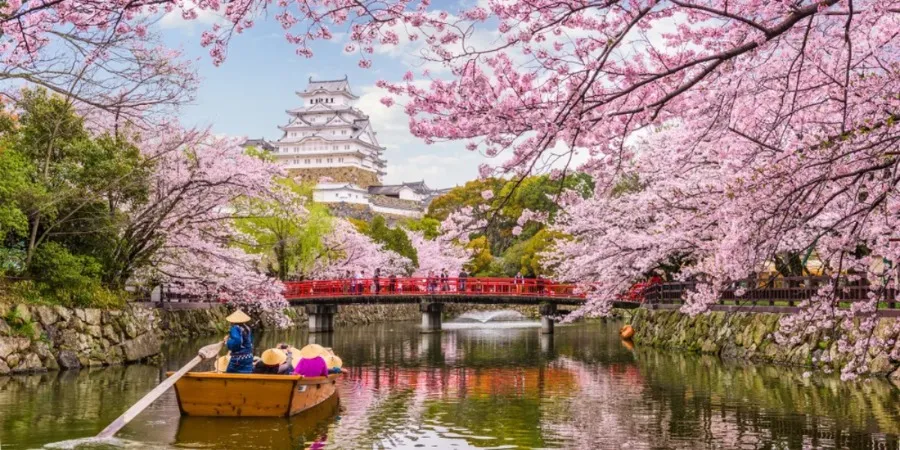Tips on How to Save Money while Traveling in Japan
Japan, with its endless beautiful landscapes and developed tourism, is the perfect destination for those who love to travel.

However, it is definitely no easy task for travel enthusiasts to plan a Japan trip enabling them to visit many beautiful locations while still being able to save as much money as possible.
Today, in this article, GoEMON will reveal to readers our guide on “Tips on How to Save Money while Traveling in Japan,” which hopefully will be of use in helping you plan an economical trip to Japan!
1. Transportation fees
- Trains: Trains are widely known as the most common and efficient means of transportation in Japan, as most cities are connected by rail. The trains in Japan are clean, and quiet, run smoothly and efficiently, and are generally reasonably priced.
However, the accumulative cost of buying separate train tickets for each stop (if you are using the train a lot) might be rather pricey. In such cases, we recommend getting a JR Pass.
The JR Pass can be purchased at the following locations: Sapporo, Sendai, Niigata, Tokyo, Shinjuku, Yokohama, Nagoya, Osaka, Hiroshima, Takamatsu, Hakata, New Chitose Airport, Narita Airport, Haneda Airport, and Kansai Airport.
- Subways: Most subway tickets within a city will cost around 200 - 300 yen for a subway line. In most major cities, such as Kyoto or Nagoya, you can buy day tickets, giving you unlimited rides within 24 hours at the price of around 800 yen.
- Bus: The bus is also another economical means of transportation that you can consider. However, it generally takes more time to get around by bus, so we would only recommend it to those who are not tight on time.
- Plane: In general, traveling via plane takes roughly the same amount of time it would travel using the Shinkansen. The prices are also roughly the same for both. ANA Airlines has many great deals available at 100 USD for foreigners that you can find on their official website.
2. Food costs
- Buying food at 100 yen stores: There are many 100 stores in Japan that sell food, groceries, drinks, toiletries, household items, and many more for as little as 100 yen. Despite the low price, most of them are actually of really decent quality. These stores are generally available everywhere throughout the country.
- Eating at chain restaurants: In Japan, there are many chain restaurants, such as Saizeria, Sukiya, Yoshinoya, CoCo Ichibanya, and many more where you can get delicious food at a relatively low price. These chain restaurants are also located everywhere around the country, so you won’t have to worry about not being able to find them. You can find ramen bowls priced under 700 yen, the cheapest curry at CoCo Ichibanya at 280 yen, and rice bowls at around 400 to 500 yen. It is of note that the prices might differ between different parts of the country.
- Buying pre-made foods at convenience stores and supermarkets: These are always readily available in a wide variety of meals, ranging from onigiri, rice bowls, noodles, soups, salads, etc. Especially, if you you go to these places in the evening, you can also find discounted deals, ranging anywhere from 10% to even 50%.
- Cut down on buying fresh fruits: Along with vegetables, fresh fruits in Japan are on the expensive side. There are still exceptions, however, such as bananas, tangerines, and bananas, which are usually more reasonably priced. Instead of buying fresh fruits, you can get canned or frozen fruits instead. Although obviously not as “fresh,” they still are pretty tasty and are much cheaper.
3. Accommodation
- Couchsurfing: This form of accommodation exchange is not as common in Japan as in many other parts of the world, but there is still a small community active here, especially in bigger cities. Make sure to book and finish your payment ahead of time for a higher success rate.
- Make use of airline miles: Also known as travel points, these are part of a loyalty program offered by airlines or/and credit cards. You can use these points to exchange for free accommodation at hotels in Japan.
- Capsule hotels: This type of accommodation usually gives you more privacy than hostels, but is much less luxurious in comparison to hotels. You will be given a small, private room, and have shared bathrooms and common areas.
Your private room will be equipped with lights, sockets, and sometimes even a small TV. As these are single rooms, capsule hotels are popular with solo travelers or those who just simply need somewhere simple to spend the night. Prices generally start from around 2,700 yen for a night.
4. Sightseeing and visiting different locations
Luckily, in Japan, there are many locations that you can visit free of charge. These range from natural landscapes, and cultural and historical relics to bustling bustling cities, and large shopping centers, which surely will be able to cater to your interests, whether it is shopping, sightseeing, or participating in cultural activities. Therefore, before coming here, it is best that you make a detailed plan, or at least a list of locations that you want to visit during your trip.
Some interesting locations that you can visit free of charge are Himawari no Sato (Japan's largest sunflower garden), the famously crowded Shibuya crossing that appeared in the Fast and Furious series, Ueno Park, Meiji Shrine, and many more.
Especially, if you plan to travel to Japan during spring, you should definitely go to the park to admire the beautiful scenery of full-bloom sakura cherry blossoms. The same goes for late autumn when all leaves turn a bright red.
GoEMON hopes that these money-saving tips were of use to you!
Don’t forget to follow GoEMON for the latest updates on life in Japan!